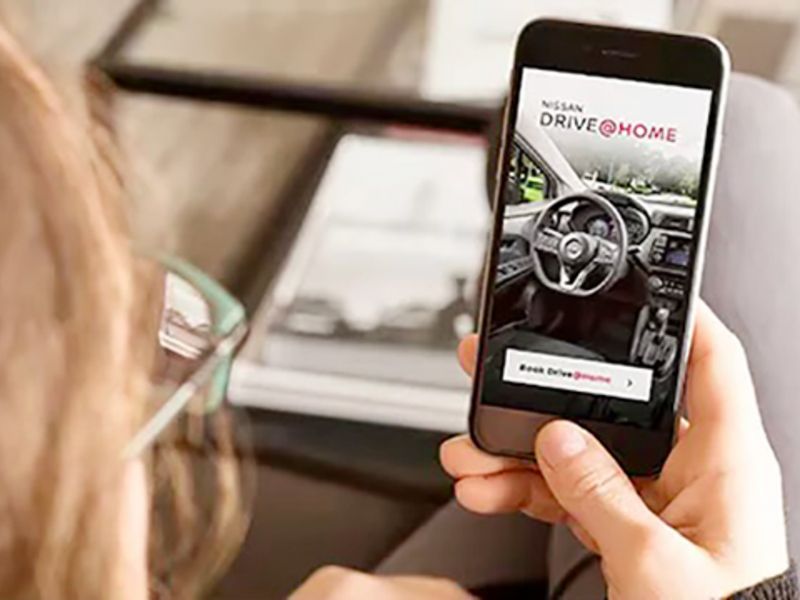
Nissan jumped into the brave new world of digital retailing this spring, rolling out a nationwide online shopping platform.
And while hundreds of dealers have already adopted the retail tool, Nissan faces a sales job to get hundreds more on board.
While digital retailing is rapidly sweeping over the retail industry, some dealers are cautious about becoming early adopters of new platforms.
At the same time, public dealership groups with several franchises are unlikely to adopt a factory platform because they have standardized digital retailing systems across multiple brands.
But Nissan is hoping to overcome the hesitancy with a glitzy marketing campaign to win over dealers and drive consumer awareness of [email protected]
The campaign will kick into high gear in November and run through the end of the year.
“We’re treating this with the magnitude of a vehicle launch,” Nissan U.S. Vice President of eCommerce Dan Mohnke said last week.
[email protected] allows consumers to shop for a vehicle, schedule test drives, complete the paperwork for a purchase — including credit approval and finance and insurance options — and take delivery without having to step inside a dealership. After delivery, customers will be able to schedule service appointments digitally.
[email protected] is a digital extension of the showroom, Mohnke told Automotive News. “It gives dealers a turnkey solution to take their business digitally to the customer.”
So far, 460 of Nissan’s 1,073 U.S. dealers have enrolled in the platform.
“Our goal is to get the vast majority of the network on board by the end of this fiscal year,” which ends March 31, Mohnke said.
Achieving that target will take some selling, said Tyler Slade, operating partner at Tim Dahle Nissan Southtowne in suburban Salt Lake City.
“You are asking dealers to give up some control of the car deal,” he said. “You are asking dealers to change their business model.
“That’s not going to happen overnight, but dealers will need to adapt.”
The auto industry is gravitating toward online sales to cater to a generation of consumers averse to brick-and-mortar shopping.
“Dealers have got to get on board because this is the train that’s coming,” said Justin Crain, managing partner at Burleson Nissan near Fort Worth, Texas. “Consumers are intimidated. They don’t want to come and fight the battle in a dealership.”
Last year, General Motors beefed up its Shop-Click-Drive online shopping tool to offer test drive scheduling, trade-ins at home or work and real-time credit applications. And in May, Stellantis pushed to get more dealerships onto its digital retail platform that launched early in the COVID-19 pandemic. The automaker touted the system’s low cost and range of functions.
Some dealers remain wary of the usefulness of factory digital retailing programs.
[email protected] “is not revolutionary — it doesn’t do anything that we are not doing with off-the-shelf digital tools,” said one Southeast region dealer who requested not to be identified.
“We didn’t see any need for the factory to be involved,” the dealer said. “It’s just another attempt to run our business.”
But Nissan’s Mohnke is quick to differentiate the factory program.
“The third-party digital retailing platforms are generally just lead-generators,” he said. [email protected] “is truly a transactional platform, meaning anything that a dealer can do in their showroom, they can do with the platform.”
While [email protected] is designed for a 100 percent digital car-shopping experience, the tool also benefits consumers who seek a hybrid shopping model. The consumer can start a transaction online, research product and pricing, and then go into the dealership to test drive and complete the transaction.
Customers typically start the vehicle-shopping process online and at some point, they may want to transition offline, Mohnke said. “But what they don’t want to do is start all over,” he said.
Mohnke is optimistic dealers will warm to Nissan’s platform as they learn more about it.
“When we do one-on-one demos with the dealers, and we show them all of the control that they have built in, then the lightbulbs start to come on,” Mohnke said. “They start to say, ‘OK, I’m comparing an apple to an orange.’ And the future is really this apple.”